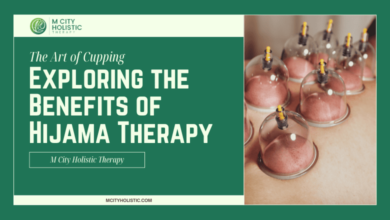How to Take the Power Back When You Feel Helpless Against Hair Loss

Whether you’re a carrot top or curly-haired cutie, if you’re like most people, you probably associate a lot of identity with your hair. So when your hair starts to go, it might feel like a part of yourself is going with it. Loss of self can leave you feeling powerless, with less agency in the world.
Thankfully, there are things you can do to take back your power and fight hair loss. There are amazing technologies, medications, and practices that you can use to turn the tide. Read on to learn about how you can take back your power and conquer hair loss.
Transplantation
If you’re looking for a quick and permanent solution to hair loss, look no further than transplantation. A hair transplant is a light surgical procedure that involves moving hair follicles from one part of your body to your scalp. Though involved, regaining your old hairline could be the long-term solution you’ve been looking for.
There are two main kinds of hair transplants you should know about: follicular unit extraction and follicular unit transplantation. FUE involves extracting individual hair follicles one at a time from a donor area, usually the back and sides of the scalp. These follicles are then used to replace those that are missing on the front and top of your scalp, restoring your hairline. One of the benefits of FUE is that it’s minimally invasive, meaning less downtime and a quicker recovery.
FUT, on the other hand, harvests multiple follicles at a time via strips of scalp from the donor area. This strip is then dissected into individual follicular units which are then used to replace lost follicles as in FUE. As you can see, the major differences between FUT and FUE are the methods of extraction they employ. Because FUE is generally less invasive it leaves less noticeable scarring, allowing for a great variety of hairstyles after it’s done. If this sounds like the solution for you, start saving up for the cost of a hair transplant. After recovery, you can recapture confidence in your hair.
Medication
If you’re looking for a less invasive, but potentially just as effective treatment, medication may be right up your alley. Medication has come leaps and bounds over the last two decades, providing comfort and relief for millions suffering with hair loss. It’s powerful stuff and should be a tool you consider for your personal arsenal. Medication is also a great support for recently transplanted hair. Similar to hair transplantation, there are two major kinds of medication to choose from: finasteride and minoxidil.
Finasteride, often also known as Propecia, is a medication that inhibits your body’s production of dihydrogen testosterone. DHT is a hormone known to be responsible for follicular miniaturization. It binds to follicles on the scalp, initiating a chemical process that causes follicles to shrink. Finasteride has proven incredibly effective at mitigating this process, allowing your follicles to stay healthy longer.
Originally developed to treat high blood pressure, minoxidil works through a process known as vasodilation. Also known as Rogaine, minoxidil widens the blood vessels in the scalp, promoting increased blood flow. Blood carries essential nutrients to your follicles, also keeping them alive and healthy. Both finasteride and minoxidil are excellent options to consider in your fight against hair loss. Just remember to stay patient, as the results of both take roughly six months to start appearing.
Lifestyle
When it comes to hair loss recovery, it’s not just about what external methods and medications you use. It’s also about making sure you live well too. Maintaining a healthy lifestyle can play a crucial role in promoting hair growth and preventing its loss. So if you haven’t already, hone in on your sleep, diet, and exercise. Improving any and all of these three pillars of health will give your hair a fighting chance.
Focusing on your sleep is a great place to start as the benefits of a good night of rest improve your overall well-being. When it comes to hair health, sleep helps reduce stress, balance hormones, improve blood circulation, and enhance hair growth phases. Turn off all electronics an hour before bed to better your sleep. Doing so will give your mind a chance to relax and drift off when you do finally lay down. Pick a consistent sleeping and waking time roughly eight hours apart to maximize rest from sleep cycles.
Proper diet and exercise can be a bit trickier to recommend, as everyone has different needs, preferences, and situations. However, in general, focus on eating food rich in essential nutrients that support hair health. These are foods with protein like fish, eggs, and lean meats, and those with biotin, like nuts, seeds, and whole grains. While there are no exercises that directly address hair health, cardiovascular exercises like running, jogging, and swimming can improve blood circulation to the scalp. Improving all three of these pillars of health in tandem will give your hair a solid foundation on which to grow.
Strike a Balance
Struggling with hair loss can be an emotionally challenging experience to contend with. Losing your hair can deal a real blow to your confidence and sense of agency in the world. The good news is that there are many approaches you can take to address and potentially reverse hair loss.
Though involved, transplants offer powerful, long-term solutions that can even restore your original hairline. Medications are great supplements to transplants and can be incredibly effective of their own accord. Improving your sleep, diet, and exercise will give you a great foundation for overall well-being. And the better your core system is, the more able it will be to fight against hair loss. Use any or all of the methods listed here to help improve your hair.
In conclusion, don’t forget to check out these compelling insights for a deeper understanding of the topic.









